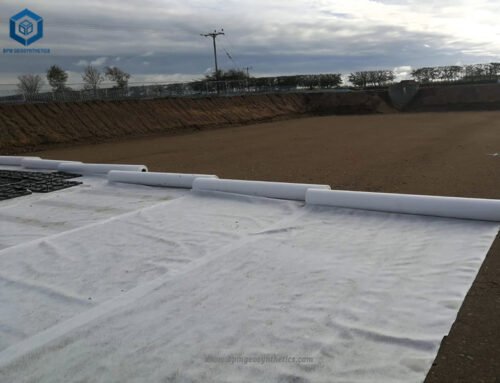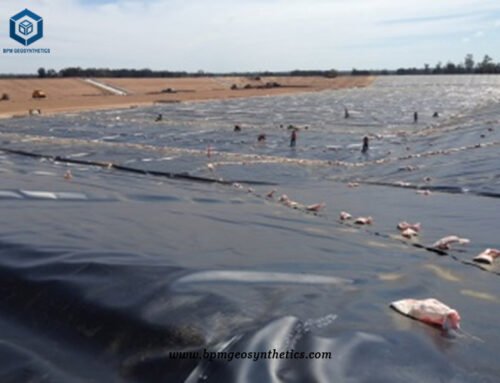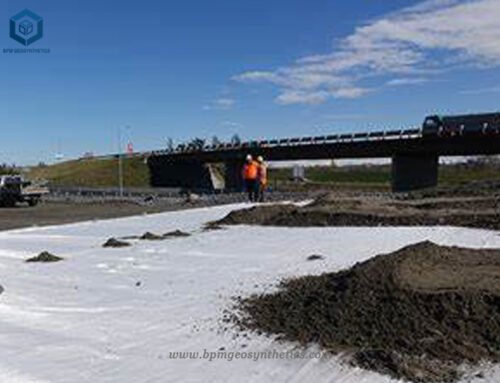Best pond liner material, also known as HDPE geomembrane pond liner, is the very low permeability synthetic membrane liner or barrier used with any geotechnical engineering related material so as to control fluid or gas migration in a human-made project, structure, or system. BPM brand smooth HDPE geomembrane liner is made from finest quality virgin high density polyethylene (HDPE) with specially formulated, combined with specified quantity carbon black, antioxidant, anti-aging agent and UV resistance components, which makes our geomembrane product with excellent resistance to UV radiation and is suitable for exposed conditions.
Best pond liner material is widely used across a variety of industries including waste containment, water containment, aquaculture, industrial project, energy project and mining project, etc. GEOSINA brand smooth geomembrane liner is available in different colors such as black, blue and white, it is packaged in standard 6-8 meters wide rolls and in thicknesses from 0.5 to 3 mm. Please contact us for technical and business assistance in selecting the best geomembranes for your projec
Case Study of Best Pond Liner Material for Aquaculture Project in Ecuador
- Location : Ecuador
- Product(s) : Best pond liner material
- Application : Aquaculture Project
Why Chose Best Pond Liner Material for Aquaculture Project in Ecuador
The selection of the best pond liner material is of utmost importance for aquaculture projects in Ecuador, and the choice of high-quality HDPE (High-Density Polyethylene) liners offers numerous advantages. A key benefit is their ease of cleaning, which saves valuable time and reduces maintenance costs. This efficiency accelerates the aquaculture cycle, leading to increased productivity and improved output. Additionally, HDPE liners provide a durable and robust barrier that effectively prevents leaks and minimizes the risk of contamination. By maintaining optimal water conditions, these liners create an environment conducive to the healthy growth of aquatic species, further enhancing the overall success of the project. Recognizing the significant benefits of HDPE pond liners, the customer in Ecuador made a well-informed decision to utilize them, thereby ensuring a successful and efficient aquaculture operation.
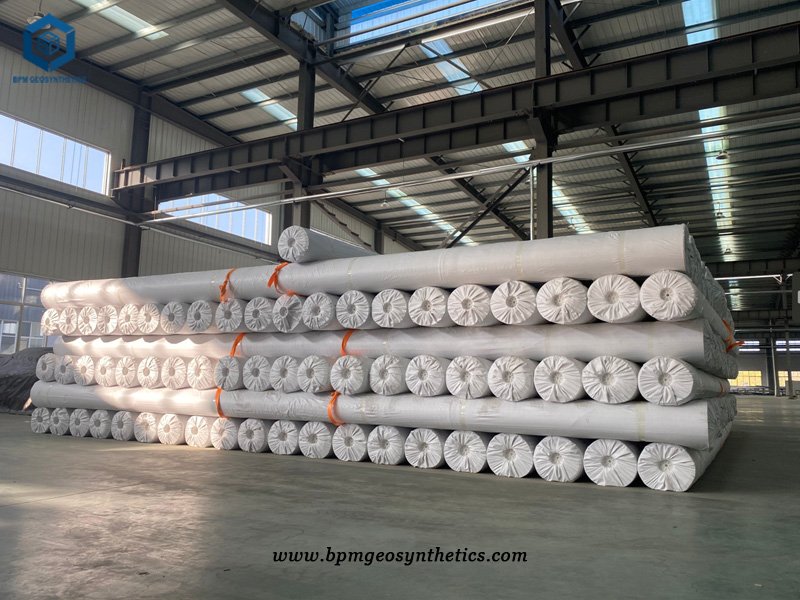
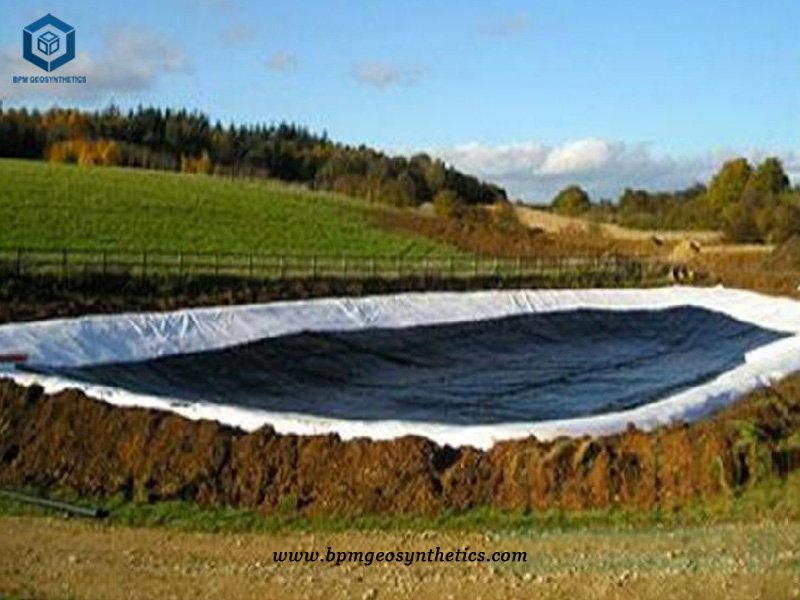
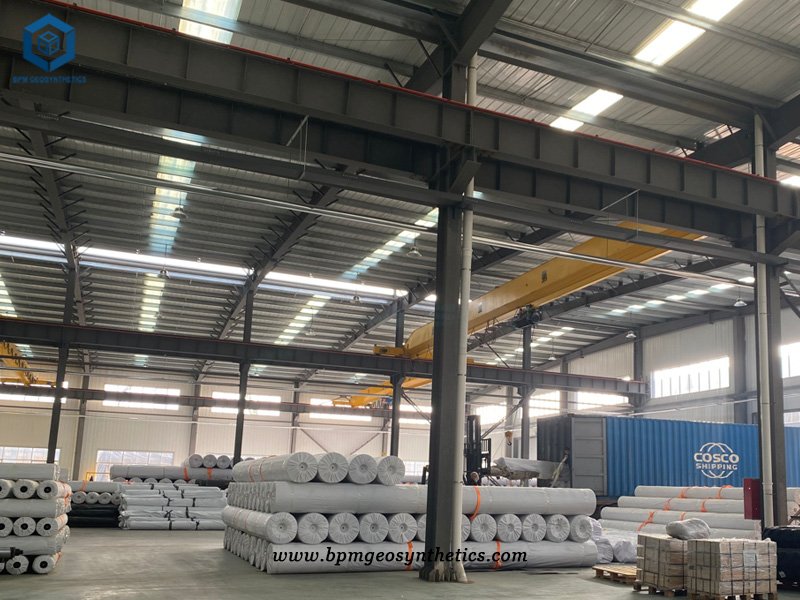
Benefits of Best Pond Liner for Aquaculture Project in Ecuador
1. Impounding.
Best pond liner material has the advantages of low permeability coefficient and strong water storage performance, which can better prevent the water in the fish pond from seeping into the soil, effectively monitor the water level, save water conservation costs, and prevent the reverse filtration of underground toxic substances into the fish pond, reduce the pollution of water quality, and help the healthy growth of fish.
2. Keep water quality stable.
The use of HDPE pond liner in aquaculture can well maintain the balance of water quality, reduce the change of water conditions, and reduce the cost and time of water quality control.
3. Monitoring oxygen content.
The use of HDPE pond liner in aquaculture can reduce the oxygen loss caused by soil infiltration, facilitate the monitoring of oxygen content in water, and save the cost of oxygen supplement in fish ponds.
4. Reduce maintenance costs.
The use of HDPE pond liner in aquaculture can better inhibit the growth of algae in the water. The geomembrane itself contains anti ultraviolet additives, so the geomembrane is not afraid of sun exposure. Since the cost and time of maintenance are relatively low, it can be more convenient and fast to catch.
5. Increase output.
Compared with direct pond excavation, the use of HDPE geomembrane in aquaculture can make the slope more stable, help eliminate the harm of rain, waves, wind and other natural conditions to fish, and also make the pond have a deeper depth and steeper slope, which is conducive to improving fish production.
6. Reduce fishing time.
HDPE pond liner is used in aquaculture, and there will be no weeds, sludge and other sundries that affect the fishing speed at the bottom of the pond. Therefore, fishing can be carried out more efficiently, reducing the fishing time, and improving the vitality and freshness of fish and shrimp.
7. Reduce disease transmission.
The use of HDPE geomembrane in aquaculture can reduce the environmental adaptability of bacteria in the fish pond, which is conducive to ensuring the healthy growth of fish and shrimp. Because it isolates the contact between soil and water, it reduces the possibility of disease transmission to the pond, thus reducing the drug cost of fish farming.
8. Easy to clean pond.
The use of HDPE pond liner in aquaculture can make the pond cleaning more convenient, and it is easier to install a clean drainage system in the pond.
9. Accelerate the breeding cycle.
HDPE geomembrane pond liner is used in aquaculture, which is easier to catch and clean, thus saving a lot of cost and time, speeding up the aquaculture cycle, and helping to improve the output.
Construction Method of Best Pond Liner Material
Before applying impermeable membrane, the slope surface should be leveled to prevent sharp outburst, and then the loose soil should be covered with impermeable membrane.
1) It should be extended from the bottom to the high position, not too tight, and 1.50% margin should be reserved for local sinking and stretching. Considering the actual situation of the project, the slope is laid from top to bottom.
2) The two adjacent longitudinal joints shall not be in a horizontal line, and shall be staggered by more than 1m.
3) The longitudinal joint shall be more than 1.50M away from the dam foot and bending foot, and shall be set on the plane.
4) Slope first and then bottom.
5) When the slope is laid, the film spreading direction should be basically parallel to the maximum slope line.
Slope laying:
Before installation, workers must inspect and measure the slope area. Based on measurements, they select properly sized geomembranes from storage. Subsequently, teams transport materials to the designated anchorage ditch platform.
During installation, crews adopt a top-to-bottom laying method for efficiency. In sector areas, they carefully cut membranes for optimal fitting. This ensures both upper and lower ends achieve secure anchorage.
Workers then verify all sections maintain proper alignment throughout installation. Finally, they conduct quality checks to confirm secure placement before proceeding.
Site bottom laying:
First, workers carefully inspect and measure the laying area. Then, they select properly sized geomembranes from warehouse inventory. Next, crews transport these membranes to their designated positions on site.
During installation, workers manually push the geomembrane along predetermined directions. They ensure smooth, wrinkle-free placement throughout the process. Finally, teams verify proper alignment before securing the membrane.
Alignment and alignment:
Workers must carefully smooth the geomembrane during installation. They should eliminate all wrinkles and ripples completely. This applies equally to side slopes and field bottoms.
Installation teams must align adjacent geomembrane sheets precisely. They typically maintain a 10cm overlap width as specified. This ensures proper seam integration and waterproofing performance.
Workers should verify smoothness throughout the installation process. They must check alignment at regular intervals. Proper tensioning prevents future movement or separation.
Pressing:
Workers must immediately secure the aligned BPM HDPE geomembrane. They should place sandbags strategically to prevent wind displacement. The team maintains constant tension during this process.
For anchorage ditch installation, crews leave extra membrane material. They follow design specifications for proper overlap length. This allowance accommodates potential settling and stretching.
Installers carefully position the geomembrane in the ditch. They ensure sufficient material for final adjustments. The team verifies proper coverage before final securing.
Key Actions:
- Immediate sandbag placement
- Wind protection measures
- Design-compliant overlap
- Settlement accommodation
- Final position verification
Longitudinal joint:
The uphill section is on the upper side and the downhill section is on the lower side, and sufficient lap length ≥ 15cm shall be reserved. The bentonite pad shall be laid in the area after passing the acceptance, and the manual “push paving” shall be carried out in a certain direction.
Specifications of Best Pond Liner for Aquaculture Project in Ecuador
For your aquaculture project in Ecuador, you require a pond liner material with the following specifications:
- Total HDPE Pond Liner Quantity: 372,400 square meters
This indicates the total area to be covered by the pond liner material. - Thickness: 0.75mm
The desired thickness of the pond liner material is 0.75mm. This thickness provides a balance between durability and flexibility for the liner. - Each Roll Size: 7m * 280m
About BPM Geosynthetics
BPM has been specializing in delivering one stop geosynthetics products and solutions to worldwide customers since its foundation in 2007. Our had provided many types of effective and state of the art geomembranes, geotextiles, geocells, geosynthetic clay liners (GCLs), drainage boards, geogrids to over 81 countries.
BPM is not only manufacturing best quality geosynthetic products but also providing professional design and installation service. OEM, ODM, custom development and fabrication are also available. If you have any questions or inquiries, please fill and submit the following form, we will reply as soon as possible.


